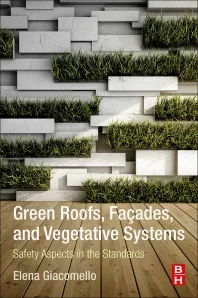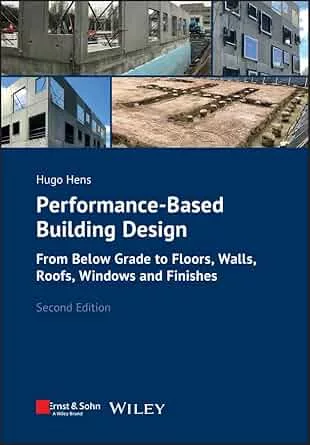Web Exclusive: Green Focus Turns to Energy-Saving Garden Roofs
How the Building Owner Benefits
With XPS insulation, PMR assemblies provide a thermal barrier with an effective aged R-value of 5.0 per inch, which helps prevent outside temperatures from straining the heating, ventilating and air conditioning (HVAC) systems. Reducing the load on the mechanical equipment can dramatically reduce the building’s energy bills as well as minimize the size - and cost - of the required HVAC unit. Building owners typically recoup the investment cost in energy savings and maintenance costs within seven years of installation.
PMR assemblies typically last 40 years or more, which is more than twice as long as a conventional roofing system. Due to the innovative design of garden roofs installed with XPS, leaks are often easier and less costly to isolate than in other roof assemblies. With less frequent roof replacements and fewer repairs, a PMR assembly maximizes the long-term return on investment with reduced waste and replacement costs.
The energy efficiency and environmental benefits can also help earn credits in the U.S. Green Building Council’s LEED program, including: Reduced Site Disturbance - Protect or Restore Open Space; Landscape Design That Reduces Urban Heat Islands - Roofs; Storm Water Management; Water Efficient Landscaping; Innovative Wastewater Technologies; Innovation in Design; as well as earning the credits associated with energy efficiency in general.
Selected LEED requirements and strategies applicable when designing green roofs are summarized in the following section.
The strategy of the project includes designing the building envelope, HVAC, lighting and other systems to maximize energy performance. For projects pursuing Credit 1, a computer simulation model may be used to confirm the satisfaction of this prerequisite. If a local code has demonstrated the quantitative and textual equivalence, it may be used in lieu of ASHRAE.
The intent is to achieve increasing levels of energy performance above the baseline in the prerequisite standards listed above in order to reduce environmental and economic impacts associated with excessive energy use. LEED requirements use one of the following options, all of which are assumed to be in compliance with the above Prerequisite 2. <br><br>
Option 1:
Demonstrate a percentage improvement in the proposed building performance rating compared to the baseline building performance rating per ASHRAE Standard 90.1-2004. The minimum energy cost savings (percentage) for each point is shown below. <br><br>
|
Points |
New Buildings (%) |
Existing Building Renovations (%) |
|
1 |
10.5 |
3.5 |
|
2 |
14 |
7 |
|
3 |
17.5 |
10.5 |
|
4 |
21 |
14 |
|
5 |
24.5 |
17.5 |
|
6 |
28 |
21 |
|
7 |
31.5 |
24.5 |
|
8 |
35 |
28 |
|
9 |
38.5 |
31.5 |
|
10 |
42 |
35 |
Additional requirements for a LEED building system are:
• It must comply with mandatory provisions in ASHRAE 90.1-2004.
• It must include all the energy costs within – and associated with – the building.
Option 2: Prescriptive Compliance Path (4 points)
Using this path, the building system must comply with ASHRAE Advanced Energy Design Guide for Small Office Building 2004. The following restrictions apply:
• Buildings must be less than 20,000 square feet.
• Buildings must be office occupancy.
• Project teams must fully comply with all the applicable criteria set in the guide for the particular climate zone.
Option 3: Prescriptive Compliance Path (2-5 points)
Using this option, the building system must comply with the prescriptive measures in the Advanced Buildings Core Performance Guide by the New Buildings Institute. The following restrictions apply:
• Buildings must be less than 100,000 square feet.
• Buildings may not be health care, warehouse or laboratory projects.
• Project teams must fully comply with Sections One (“Design Process Strategies”) and Two (“Core Performance Requirements”). The strategy uses a computer model to demonstrate the energy performance and the cost-effective energy-efficiency measures. The replacement of the ASHRAE standard is possible upon proven efficiency.
There are also 2-3 minimum points achieved under Option 2.
• Three points are available for office, school, public assembly and retail projects less than
• 100,000 square feet that comply with Sections One and Two.
• Two points are available for all other project types less than 100,000 square feet (except health care, warehouse or laboratory projects) that implement the basic requirements of the Core Performance Guide.
There are also 2 additional points available under Option 3:
• Up to two additional points are available to projects that implement performance strategies listed in Section Three (“Enhanced Performance”).
• For every three strategies implemented from Section Three, one point is available.
These strategies are addressed by different aspects of the LEED program falling outside of Energy and Atmosphere requirements and are not eligible for additional points under EA Credit 1. For more information on all LEED criteria as it applies to XPS used in green or garden roofs, visit www.xpsa.com/enviro/green.html.
Looking for a reprint of this article?
From high-res PDFs to custom plaques, order your copy today!




